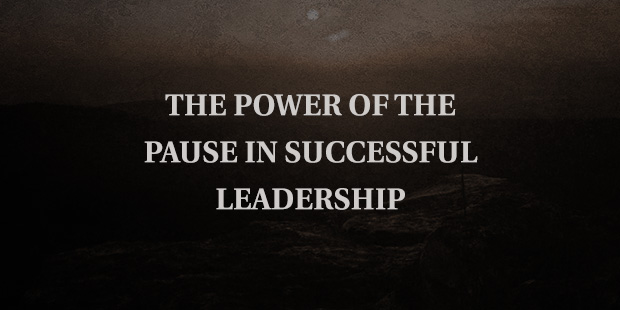
The Power of the Pause in Successful Leadership
The demanding pace for leaders has never been more challenging. Digitally connected every moment, we are increasingly tied to a 24-hour global clock. This is the “new normal.” We are expected to perform continually in the face of crises and multifaceted pressures, including downsizing, mergers and the accompanying stresses and expectations. The list of demands, personal and professional, never ends.
- Could it be that going faster and driving harder are not the answers?
- Could there be another way to sustain high performance?
- Could it be that the source of our real value as leaders might come from different thinking and different choices rather than from perpetuation of the incessant pace we strain to maintain?
How often do we miss small but significant moments—opportunities that can unlock our hearts and minds, open us and connect us more deeply with others and the possibility of creating something new and different? Too often, we get carried away by our busy-ness. We are too hyperactive, too reactive to notice hidden, value-creating dynamics waiting beneath the surface within us and around us. Tethered to our smartphones, we are too caught up and distracted to take the time necessary to focus our attention, sort through complexity or locate submerged purpose.
In our urgent rush to get “there,” we are going everywhere but being nowhere. Far too busy managing with transactive speed, we rarely step back to lead with transformative significance.
>> Pause—a step back to lead forward—is a transformative, pragmatic, albeit paradoxical principle for sorting through complexity and coming into conscious connection with what is important.
Why would pragmatic, hard-charging, achievement-driven leaders pause in order to accelerate performance and growth? Put simply, that is exactly what is needed to sort through complexity and drive performance to the next level. If leaders today do not step back to gain fresh perspective and to transcend the immediacies of life, we will continue to crash economically, personally, and collectively. Our downside survival and upside innovation depend on it. Certainly, we need to do more to meet the demands of high-performance, complex problems, and innovation, but in today’s world the doing needs to be new and different.
The Pause Principle is the conscious, intentional process of stepping back, within ourselves and outside of ourselves, to lead forward with greater authenticity, purpose, and contribution.
Kevin Cashman, founder of LeaderSource, an internationally recognized leadership develop program and author of The Pause Principle, develops these thoughts into Seven Pause Practices. This value-creating methodology engages more examination, higher-order logic, rational analysis, profound questioning, deeper listening, higher-quality presence, broader perspective, greater openness to diverse thinking and input, and ultimately more influential, innovative action.
>>Download Kevin Cashman’s Pause to Lead Forward manifesto here.













